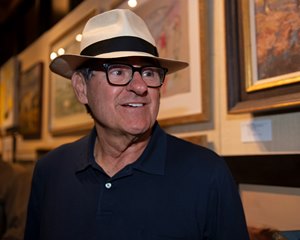Five Minutes With ... Owner Peter Brant


BloodHorse caught up with owner Peter Brant, who recently decided to return Sistercharlie to racing in 2020 for her 6-year-old season.
BH: What went into the decision to bring back Sistercharlie for another season of racing in 2020? How excited are you to see her race again?
PB: We're very excited. We decided to keep her in training primarily because she's still at the top of her game, and we think it's important for marquee horses—horses who are competing at the highest levels and who have a fan following—to continue so long as they're sound and in form. Though she has been competing for three years, it has been a fairly light schedule with only 15 races—10 of them were grade 1s and she's won seven of those and placed in the other three. She's been consistently brilliant, and it's a pleasure to see her compete.
BH: After winning a championship in 2018, Sistercharlie figures to be in the thick of a close race for 2019 champion female turf horse. Can you advocate for her selection to repeat?
PB: That's up to the Eclipse Award voters. But I'm certainly biased in her favor and I think you can make a solid case for her to repeat. She won three straight grade 1s at three different tracks, all at 1 1/8 miles and longer with a track record in the Beverly D. I hold classic distances in high regard and I think that from 1 1/16 miles to 1 1/4 miles, she would be weighted as the highweight around two turns.
BH: United States-based horses did very well in the turf races at this year's Breeders' Cup—winning six of the seven races on the grass. What does that performance say about U.S. turf racing?
PB: With a few exceptions, the U.S.-based turf horses handle the firmer ground and tighter turns a bit better than their European counterparts. The U.S.-based horses seem better suited for it and that's one of the reasons for the success at this year's Breeders' Cup.
BH: Are U.S.-based owners taking full advantage of current opportunities in turf racing?
PB: They're starting, too, yes. And I think you'll see more of it. The growth of turf racing here is encouraging. They seem to fill a little easier than dirt races and the bettors like them. It is interesting to see more owners importing European horses back to the U.S.A. from Ireland, England, and France with success on the turf here in mind. Top-class turf horses now have a lot of options here once the European 3-year-old season is over. With top horses from here, Europe, and South America, the filly-and-mare turf division has now become one of the toughest and most competitive divisions, truly world-class.
